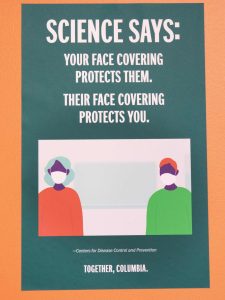For others, routine visits to a hospital left patients seriously ill with antibiotic-resistant staph infections. The particularly dangerous Methicillin-resistant Staphylococcus aureus, referred to as MRSA (“mur-suh”), has already caused the death of several area children and an estimated 19,000 people nationwide.
To deal with the growing problem, U.S. Sen. Dick Durbin (D-IL) authored legislation that would help hospitals and communities prevent, detect and treat staph infections, including the deadly MRSA.
The Community and Healthcare-Associated Infections Reduction (CHAIR) Act, introduced Oct. 30, addresses public awareness, research, reporting and prevention efforts.
Several families attended the Oct. 28 press conference at whichDurbin announced the legislation, including Linda Cowser and her son, Pharon, who was released two days earlier from the hospital where he was still being treated for MRSA.
“I fell off the bike riding with my friend,” said the 12-year-old, who was on crutches because the disease is still in his hips. “I was diagnosed with MRSA, and I had nine operations and three special procedures. I’m supposed to go back for another one this Thursday.”
After his fall, Cowser said her son complained that his leg hurt, and three days later he could barely walk. But when she took Pharon to the emergency room, they sent him back home with no diagnosis.
“Three days later, he had a fever and he had lost a dramatic amount of weight and he was hunched over like he was a little old man,” Cowser said. “And I couldn’t touch him anywhere. Every time I touched him, he screamed ‘Mama, please don’t touch me.'”
After rushing Pharon back to the hospital, doctors diagnosed the boy with MRSA, which Cowser said she had never heard of before and had no idea what she was up against. Pharon was transferred to the University of Chicago Hospital, where he endured multiple surgeries.
“It was such a horrific ordeal,” Cowser said. “For 35 days, he had a fever of 102 degrees and the doctors were scratching their heads sometimes, but thank God, he made it.”
Although many Americans may be just learning about MRSA, it afflicted 95,000 people in 2005 – and 19,000 died from it – according to a recent study by the Centers for Disease Control. That is more than the number of people who died from HIV/AIDS, homicide, emphysema or Parkinson’s, Durbin said.
About half of the MRSA infections occur in schools or other public buildings – and are called community-associated infections. The other half occur in hospitals or clinics – and are called healthcare-associated infections. The available data is based on only 2 percent of healthcare facilities that voluntarily report infection rates, doctors said at the event, so much is unknown.
“With better data, it’s easier for researchers to learn more about how to treat and, ideally, how to prevent these dangerous infections,” Durbin said.
Dr. John Segreti of Rush University Medical Center said the legislation would help doctors address both types of infections and help standardize practices around the country. He said the comprehensive legislation would help address the significant MRSA problem they are facing.
“The infection rates have stayed fairly stable, but the (antibiotic) resistance rates are increasing,” Segreti said. “We are desperate for new antibiotics and new approaches for the treatment of multi-drug resistant … bacteria.”
Ten years ago, another doctor started seeing healthy people in the community coming in with MRSA infections. Dr. Robert Baum, pediatric infectious disease specialist at University of Chicago Medical Center, said he now spends all of his professional time on MRSA.
“We think that community-based MRSA is at the epidemic state now,” said Baum, who is a member of the Infectious Diseases Society, which worked with Durbin to write the legislation.
“We think that the hospital was once the epicenter of MRSA and hospital infections are easier to track than community infections, so that is the traditional focus.”
But other populations are getting staph infections now, including prisoners, athletes, students and members of the military, Baum said.
These are the new “risk groups,” he said, and doctors are not yet sure why this is happening. In addition, household contact with infected individuals can spread the disease to other family members who share towels or bedding with someone infected.
Although it is important to be aware, people do not need to be alarmed, Baum said, since not every cut or scrape will get infected and not all infections are MRSA. Skin and soft tissue infections are the most common method of entry, he said.
“Staph can get in whenever there is a break in the skin, so keep them clean, keep them covered,” Baum said. “If they start to get infected and red and swollen, seek medical attention sooner rather than later.”
Categories:
Mind & Body Nationwide Public
Tags:
dick durbin federal legislation mrsa staph infections






Be First to Comment